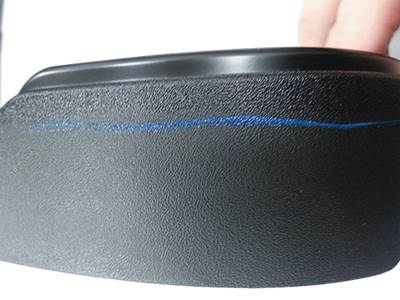Know-How

Narrow Your Know-How Search
Latest Know-How Articles
VIEW ALLUnderstanding Postmold Shrinkage — Why Do Part Dimensions Change Over Time? — Part 1
What role does the glass transition temperature (Tg) of a polymer play in whether a molded part will continue to shrink after it’s molded?
Read MoreLet's Take a Deeper Dive on Compression Ratio for Single-Screw Extruders
Two real-world processes illustrate the importance of compression ratio.
Read MorePolymer Showdown — POM vs. POK — May the Best Material Win!
Third in a series, an expert from plastics engineering consultancy The Madison Group pits leading thermoplastics against each other to see how they differ in processing characteristics, chemical resistance, thermal and mechanical performance and more.
Read MoreWhen Injection Molding Simulation Can Be a Great Troubleshooting Tool
Injection molding simulation can serve as a powerful tool not just for design but also for ongoing production optimization.
Read MoreHow Compression Ratio Impacts Extruder Performance
Let’s investigate how compression ratio affects performance of an extruder processing LLDPE.
Read MorePolymer Science for Those Who Work With Plastics: Why Entanglements — Not Just Molecular Weight — Drive Plastic Performance
Ever try running your fingers through tangled hair? Yeah … that’s not fun, but that’s what happens at the molecular level when polymer chains reach the right length. They wrap around each other, intertwine and … get stuck — and those tangles are the real reason plastics perform the way they do.
Read MoreLatest Know-How News And Updates
Solving Issues with Gloss
Your problem may be related to tooling, material, processing, or combinations thereof. Here’s how to find the root cause.
Read MoreEXTRUSION: Melting 101
Learn the basics on how polymer melts in a single screw. Barrel temperature plays less of a role than you might think.
Read MoreFeatured Posts
Use a Process Assessment to Determine the Benefits of Screw-Design Modification
This type of analysis analysis will provide the converter with a clear picture of whether changes to the screw could provide economic gains through increased rate, yield, and quality.
Read MorePolymer Showdown — PPO vs. PA66: May the Best Material Win
Second in a series, an expert from plastics engineering consultancy The Madison Group pits leading thermoplastics against each other to see how they differ in processing characteristics, chemical resistance, thermal and mechanical performance, and more.
Read MoreScrew Bounce — What Causes It and Why You Should Care
There are a lot of theories about screw bounce in injection molding it, but what’s the actual cause? Through a series of experiments, and some good old-fashioned math, the author found out.
Read MoreMoving Beyond the Relative Viscosity Curve — Determining Optimum Plastic Flow Rates: Part 1
Should injection molders consider using a range of plastic flow rates, versus the selection of one plastic flow rate from the relative viscosity curve?
Read MoreHow To Identify Resin Degradation in Single-Screw Extruders
Degradation can occur in many single-screw extrusion operations, and typically occurs due to minor design flaws in the screw. Here is how to track it down.
Read MoreBulk, Solid and Melt Density: How to Calculate These Values and Why They Matter — Part 2 of 2
Understanding and calculating solid density and melt density will help molders with everything from material and machine selection to determining piece part costs.
Read More













